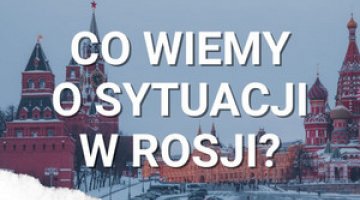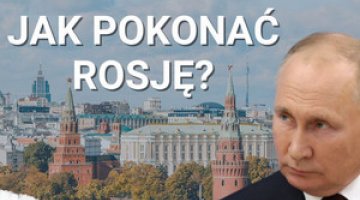The European Commission’s plan for abandoning Russian energy imports
On 6 May 2025, the European Commission announced a roadmap proposing measures to ensure the EU’s complete phase-out of Russian energy imports. According to the plan, EU member states are expected to end their purchases of Russian oil, gas, and uranium in a coordinated, secure, and gradual manner by the end of 2027. This is to be achieved, among other things, through:
- a ban on concluding spot contracts and signing new agreements for Russian gas starting by the end of 2025, along with a complete halt to gas imports under existing long-term contracts from the end of 2027;
- a ban on extending contracts for Russian uranium, enriched uranium, and other nuclear materials, and on signing new contracts for such supplies; in addition, the use of trade instruments intended to reduce the profitability of imports from Russia;
- the completion of the phase-out of Russian oil imports by the remaining importing countries (Slovakia and Hungary) by the end of 2027, along with measures to increase the effectiveness of existing sanctions.
Support for this process will include improved transparency and data avaliability, detailed national plans from member states for phasing out Russian fuel imports, enhanced intra-EU self-sufficiency (for example, through increased production of biomethane and medical radioisotopes), better utilisation of existing infrastructure and mechanisms (such as AggregateEU), and close cooperation with the European Commission and other member states (see Appendix for more details).
Although the roadmap was announced after several months’ delay (and three years after the launch of the previous Commission’s flagship strategy, REPowerEU – intended as a response to Russia’s full-scale war against Ukraine), it represents an important political signal reaffirming the EU’s commitment to ending both its cooperation with, and dependence on, Russia in the strategic raw materials sector. It also brings the EU closer to achieving one of the key goals of the Polish presidency of the Council of the European Union. However, the plan’s actual impact will depend firstly on the specific legislative proposals to implement the European Commission’s vision (expected in June this year), and secondly on how these proposals are adopted and executed by the member states.
Commentary
- The road map demonstrates the European Commission’s determination to eliminate EU member states’ dependence on Russian fuels (see ‘The unfinished de-russification. The remnants of energy ties between the EU and Russia’), despite the evolving international situation and emerging proposals to resume imports once the war concludes. It thus represents an important political signal, particularly regarding the proposed actions aimed at a complete halt to Russian gas imports – including LNG – through the introduction of specific, binding restrictions. These measures, although effectively under discussion since the start of the invasion, have proven difficult to agree upon within the EU, resulting in the absence of formal sanctions on Russian gas imported into the single market. At present, Russian gas continues to flow to more than a dozen EU countries, both via pipelines and in liquefied form. While the volumes are significantly lower than before the invasion, imports of Russian gas increased by approximately 20% in 2024 compared to 2023 (see ‘The EU’s gas market in 2025: Russian gas, new US policy, and strategic uncertainties’). The proposed measures aimed at reducing Russia’s role in the nuclear energy sector – which has thus far remained outside the scope of EU sanctions – are also of considerable significance. In the case of crude oil, the focus lies primarily on strengthening and enforcing the restrictions that have already been agreed upon.
- An assessment of the feasibility of the European Commission’s plan will only be possible once detailed legal solutions are unveiled, which is expected in June. In addition, the proposed measures will need to be approved – and potentially amended – by both the European Parliament and the Council of the EU. A key area of uncertainty is whether the proposed instruments could, in practice, render a complete phase-out of Russian energy imports feasible – particularly with regards gas – and how effectively they might constrain options for re-exports or swap arrangements via third countries such as Azerbaijan or Turkey. The potential requirement to terminate or withdraw from still-valid contracts could pose a major challenge. For example, Slovakia’s agreement remains in force until 2034, and Hungary’s until 2036. It also remains unclear whether the Commission’s planned measures can be adopted despite opposition from certain member states – such as Hungary and Slovakia, which have already voiced objections – and whether the unanimity requirement could be bypassed. Some commentators have suggested that the Commission may attempt to circumvent the unanimity requirement by invoking the EU’s competences in internal market and energy matters. However, according to some interpretations, this legal route could complicate companies’ ability to invoke force majeure should they be required to breach existing long-term contracts.
- The successful implementation of the roadmap’s objectives – and the determination on the part of EU member states to fully eliminate Russian fuels – will be crucial for its overall effectiveness. It is the individual national capitals, rather than the European Commission, that will bear the responsibility for bringing this dependence to an end. At the same time, it remains unclear whether delays in implementation or failure to act on the roadmap’s proposals will incur any consequences. What will matter most is the practical capacity, political will, and support available to assist member states in overcoming specific challenges – for example, the issue of nuclear fuel supplies to Slovakia and Hungary, which have so far undertaken only preliminary diversification efforts in this area. Consequently, what will be crucial in the roadmap, future legislation, and accompanying measures must include elements that encourage more sceptical countries and address their specifics concerns. The proposed approach, involving gradual disengagement tailored in terms of pace, design, and tools to each country’s needs, appears to be a step in that direction. However, the unveiled plan fails to address all identified risks. It could lead to higher import costs and, consequently, higher energy prices – particularly in the gas market – which would especially affect landlocked countries such as Slovakia and Hungary. It also implies increased bureaucracy and a need for close coordination with the European Commission through new national planning processes. Additionally, the plan adopts a cautious stance towardsinvestment in new gas capacity – whether targeted infrastructure projects in Central and Southeastern Europe or support for scaling up production of alternative gases beyond biomethane and biogas.
- The dynamic international situation, including the future of the war in Ukraine and the suggested possibility of renewed US-Russia cooperation in the energy sector, could pose a major challenge to the effectiveness of the proposed measures. Emerging discussions about US investors potentially taking over the Nord Stream 2 pipeline or gaining control of Ukrainian gas transit routes have raised questions among market participants not so much regarding the end of Russian imports, but rather about the possibility and terms of increased future deliveries . These concerns are further fuelled by reports of talks between Washington and Moscow on options for resuming Russian gas exports to the EU. Another complicating factor could be the lack of a formal political agreement between the EU and the United States on increased American LNG supplies, even though European energy companies continue to sign new contracts for importing this commodity (see ‘NextDecade strikes LNG supply deal with TotalEnergies for 1.5 million tonnes annually’). At the same time, if the European Commission’s plan is followed up with well-crafted legal solutions, it could serve as a tool to encourage member states to act more consistently in pursuing diversification and phasing out Russian fuels. It may also strengthen intra-EU unity and – despite potential policy shifts in Washington – create political and legal obstacles to any attempts by individual member states to revive energy cooperation with Russia, such as the launch of the surviving branch of the Nord Stream 2 gas pipeline.
APPENDIX
As part of the roadmap for ending the Russian energy imports by EU member states, announced on 6 May 2025, the European Commission proposed nine actions.
The first four concern the import of Russian gas. The European Commission proposes to:
- increase transparency of information on supplies from Russia to the EU market by requiring member states to disclose to the European Commission certain information related to contracts for Russian gas, as well as data from customs offices and other relevant public authorities;
- introduce mandatory national plans for phasing out gas imports from Russia. Member states should submit the first of these by the end of 2025. They are to assess the current level of dependency and its contractual conditions, present a timeline and stages for phasing out Russian gas, as well as specific diversification options and possibilities. Cooperation with the European Commission is to play an important role in the preparation of these plans and specific actions – within the framework of the Gas Coordination Group, which serves as an advisory body on gas supply security – as well as at the regional level;
- implement legal instruments enabling the termination of imports from Russia. The European Commission plans to ban the import of Russian gas:
- by the end of 2025 at the latest, based on spot contracts, as well as the conclusion of any new agreements;
- by the end of 2027 at the latest, based on existing long-term contracts for gas supplied via pipelines and in liquefied form (LNG);
The Commission assumes that, due to the already achieved reduction in imports, the instruments and alternatives developed, as well as the planned gradual further phase-out and diversification, the above bans will have only a limited impact on prices and supply security;
- continue or increase support for import diversification. The European Commission proposes the continued use of the AggregateEU demand aggregation mechanism to diversify gas supplies and to support trade in low- and zero-emission gases, such as biomethane. It also seeks to increase the production of biogas and biomethane. In addition, the European Commission aims to minimise problems in the use of existing regional infrastructure in Central and Eastern Europe through cooperation between countries in the region and members of the Energy Community within the framework of the Central and South-Eastern Europe Energy Connectivity (CESEC) group, which coordinates regional efforts to facilitate the construction and operation of cross-border energy infrastructure in the region.
With regard to the EU’s dependence on Russia in the nuclear fuel cycle, the European Commission suggests:
- supporting the gradual phase-out of imports of Russian uranium, enriched uranium, and other nuclear materials. The European Commission is expected to propose trade instruments aimed at reducing the profitability of imports from Russia, and to ban the extension of existing contracts and the signing of new ones for Russian uranium, enriched uranium, or other nuclear materials, co-signed by the Euratom Supply Agency;
- introducing a diversification requirement and national plans for phasing out supplies from Russia. The European Commission is to propose specific targets for the five member states dependent on Russian imports and operating VVER reactors (Bulgaria, Czech Republic, Finland, Slovakia, and Hungary), enabling a gradual phase-out of these supplies and ensuring alternatives, including through the launch of European production of fuel compatible with VVER reactors;
- the creation of a European Radioisotopes Valley: increasing domestic production to reduce import dependence (primarily on Russia) and ensure the supply of medical radioisotopes needed by EU member states.
Finally, the European Commission intends to eliminate the EU’s dependence on Russian oil imports by:
- obliging the two member states still importing it (Slovakia and Hungary) to present detailed national plans mapping the current level of dependence and outlining a path to phase it out by the end of 2027. These plans are to be analogous to those for phasing out gas imports, and may even form part of them;
- increasing the effectiveness of sanctions and limiting their circumvention.





